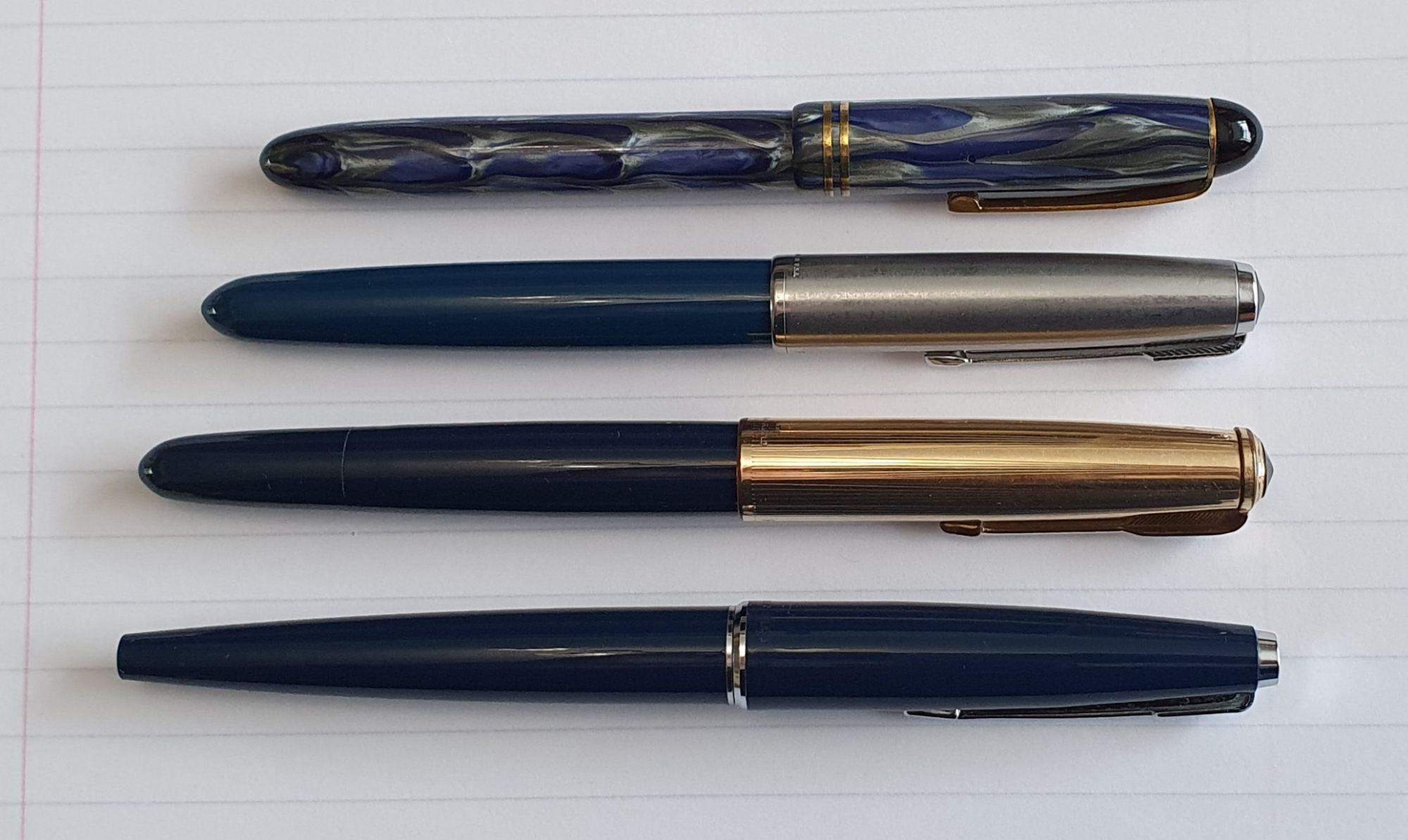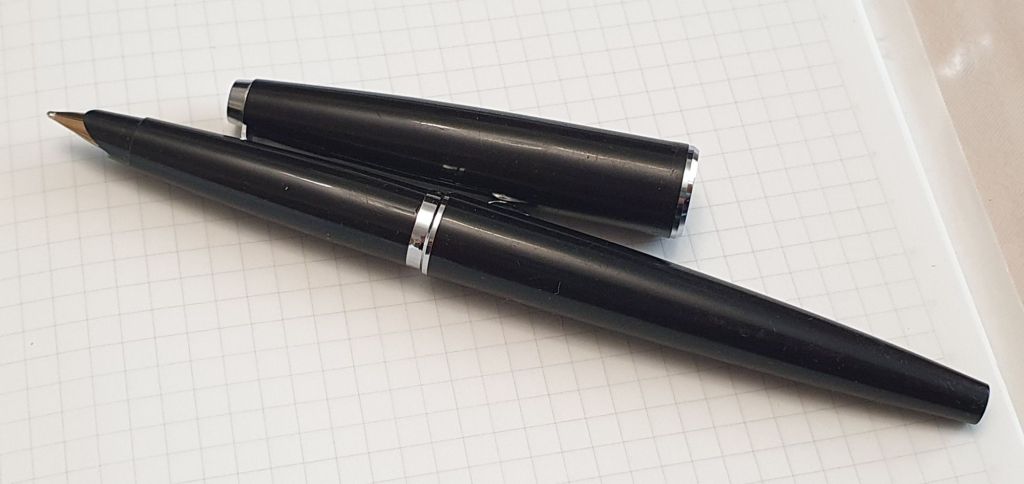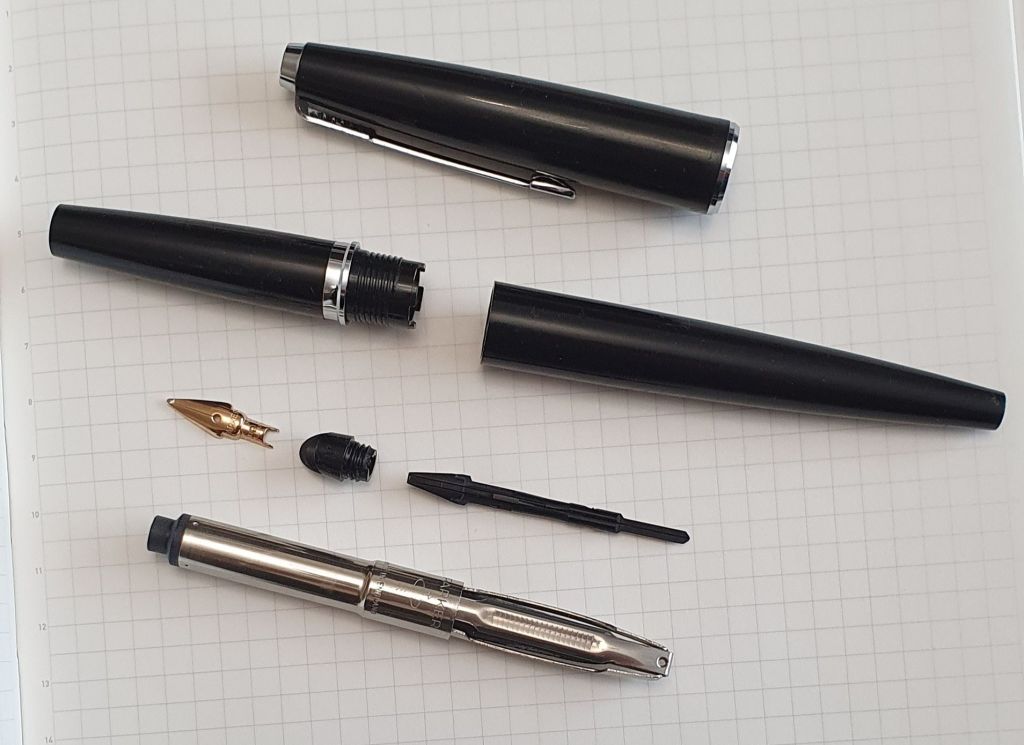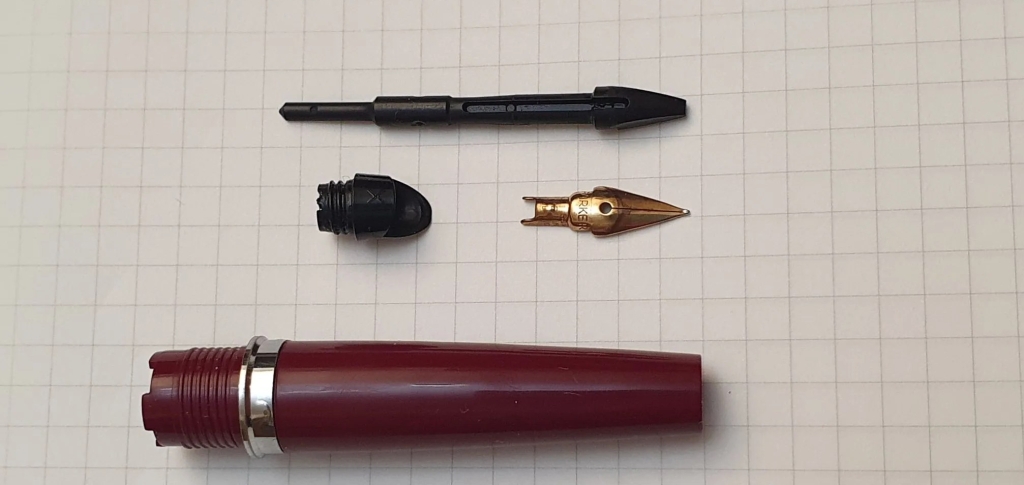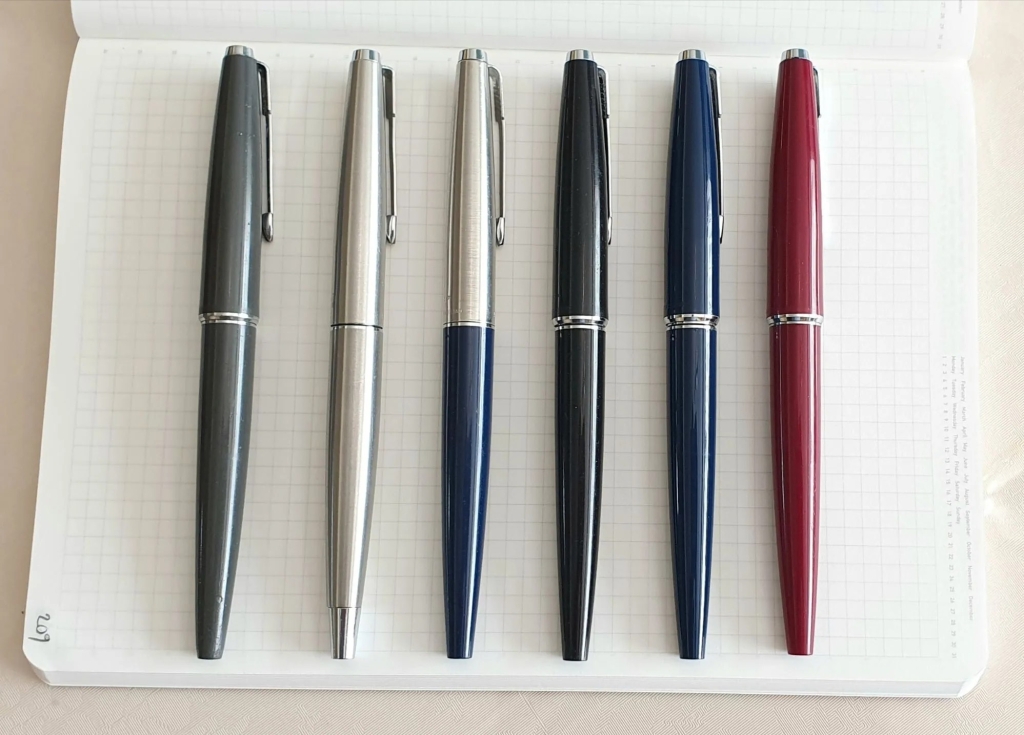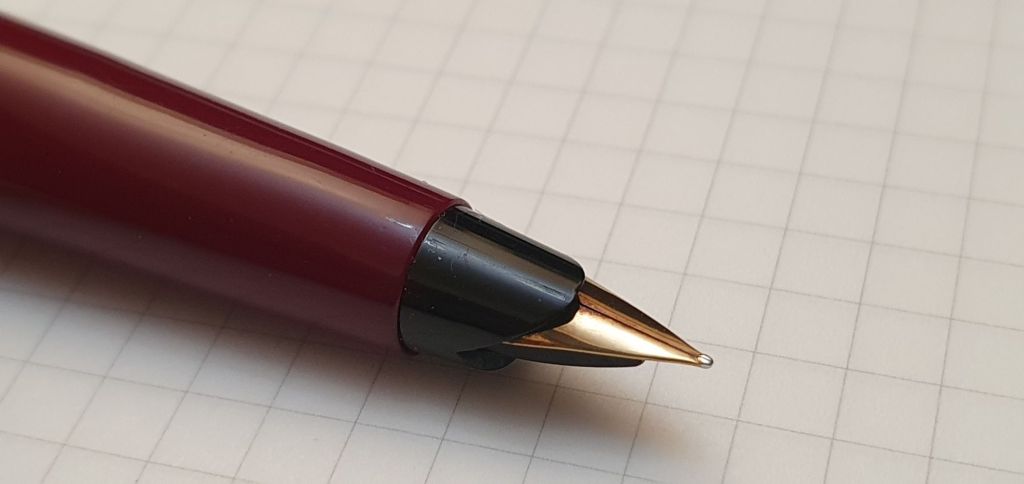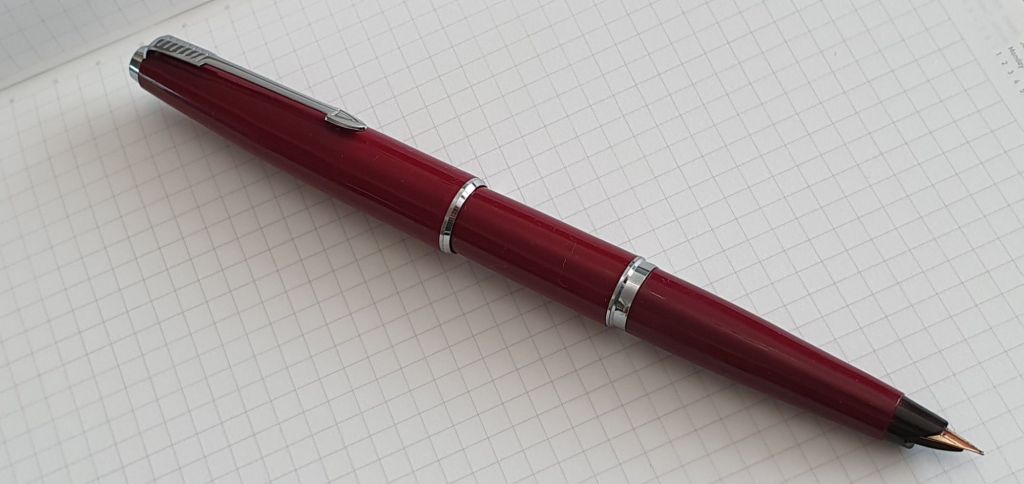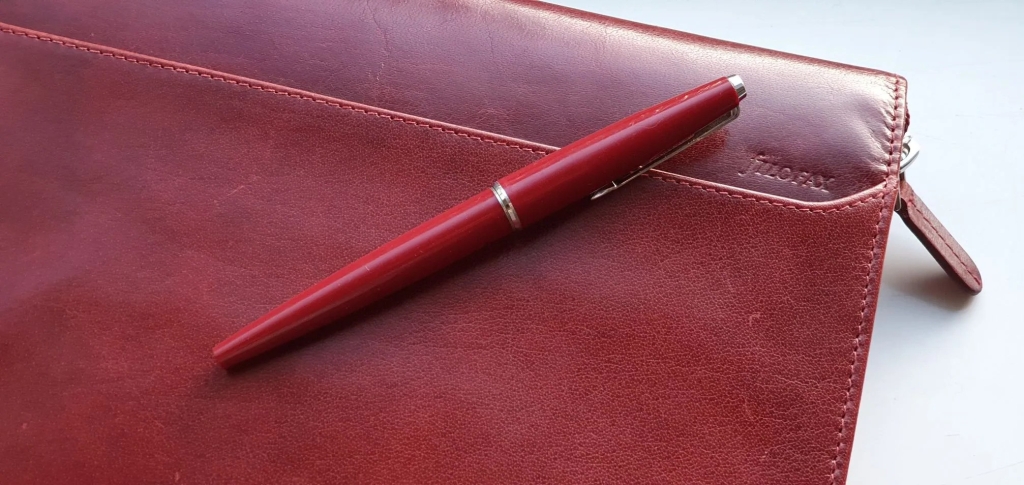Recently, I was thrilled to win an eBay auction for an attractive, marbled blue and grey vintage fountain pen. It was a lever filler with a 14k gold nib. The sac had been replaced and it looked to be in good condition. I had looked at the seller’s photographs again and again in the week before the auction.
When it arrived, it looked even prettier in person than in the photographs, although much smaller than I had expected. I believe it to be a Burnham 54, although there is no imprint on the barrel and I know little about this brand. There were many variants of the model 54 and numerous other clues to look for in the finial, pocket clip, branding on the clip, the number of cap rings, the inscription on the nib and the shape and markings of the lever filler.
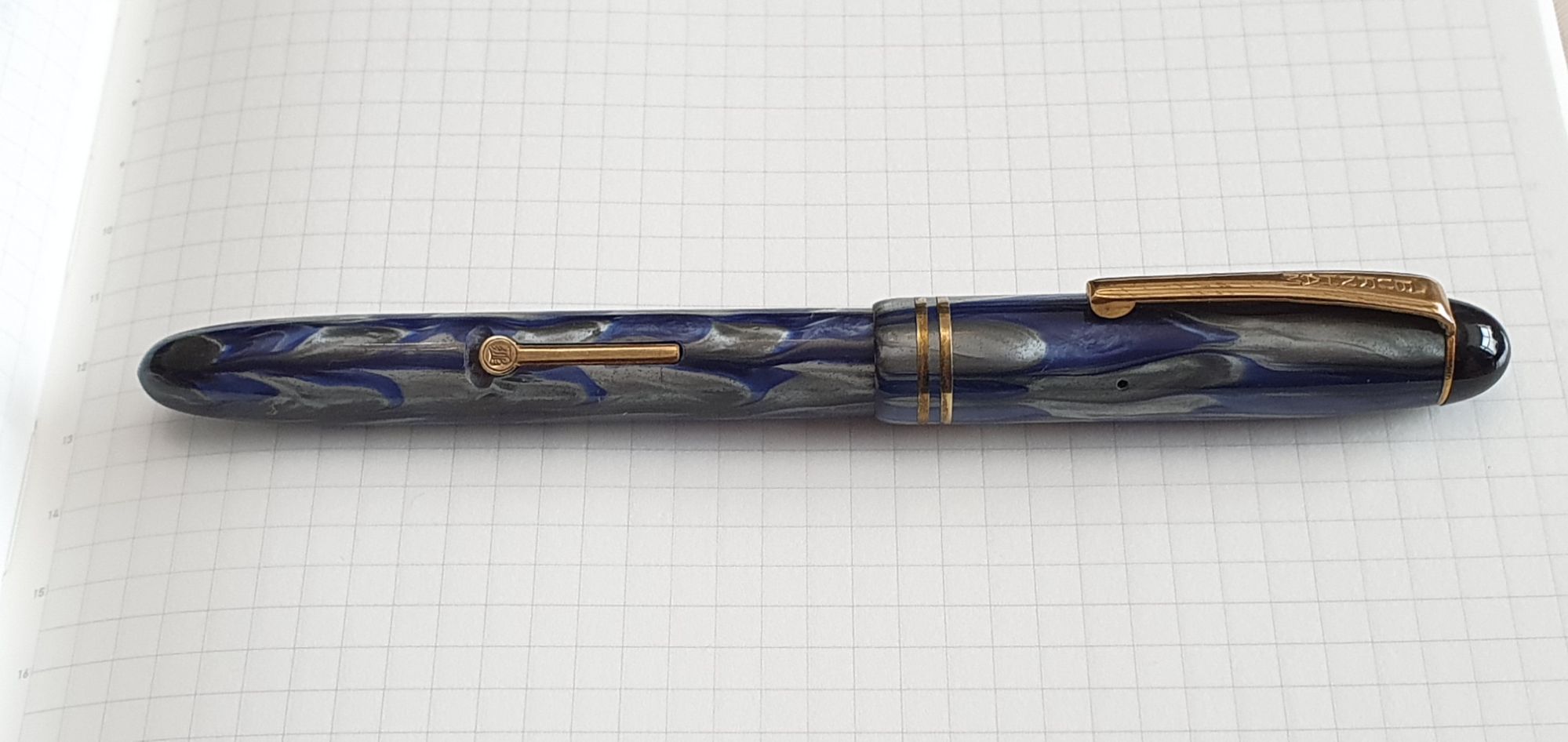
In his book “Fountain Pens” by Peter Twydle, (2009), he includes a few paragraphs about Burnham in his chapter on manufacturers. He writes “The pen trade has recognized Burnham, perhaps unfairly, as the poor man’s Conway Stewart.” The company was started by Harry Burnham in London in the 1920’s and continued until the 1960’s. Their pens were mostly lever fillers and used similar materials to Conway Stewart, but being less prestigious and lower priced, became thought of as school pens.
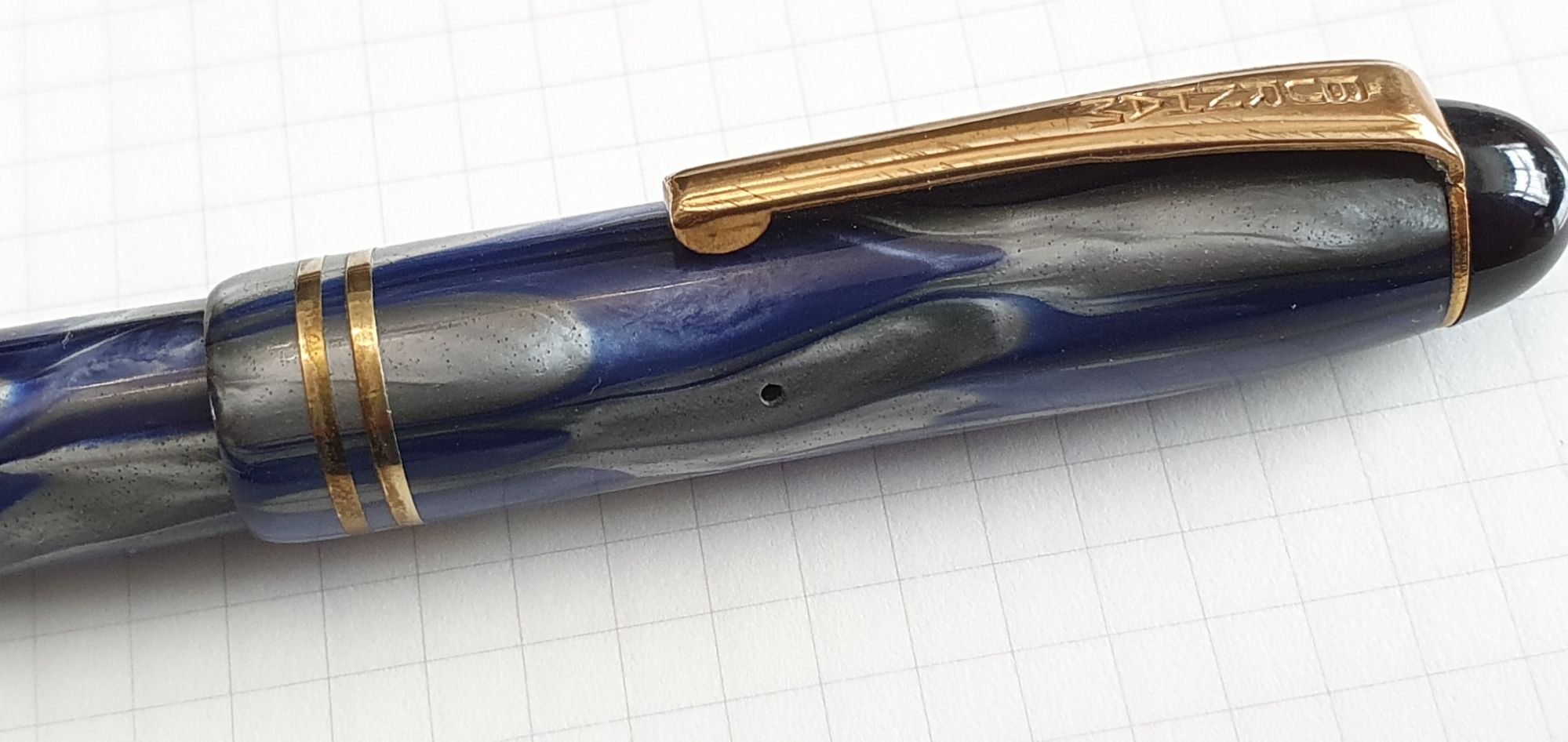
For a detailed account of Burnham pens, there is a comprehensive study on the WES website, (the Writing Equipment Society), wesonline.co.uk from 2011 by Alan Charlton, on Burnhamography. Meanwhile, my post here is more of a “show and tell” since I know little about this pen.

Had I known how small the pen was by current standards, even though beautifully-proportioned, I would probably not have bid. This would have been a great shame as I have found the pen very comfortable and enjoyable to use. As I have tended to avoid pens which I thought of as too short or too slim, this was an exciting revelation with a potential to extend the already vast rabbit warren.
After flushing the pen, I filled it with Waterman Serenity Blue. It filled well. The writing experience from the 14k gold nib was a joy: silky smooth, broad, with an optimal flow and just a little bounce, that you might call semi-flex. This more than compensated for any shortness or skinniness of the pen. I cannot tell you whether the barrel and cap material is celluloid or plastic, or whether the feed is ebonite or plastic. I have avoided posting the cap and instead have grown accustomed to holding this little pen unposted.
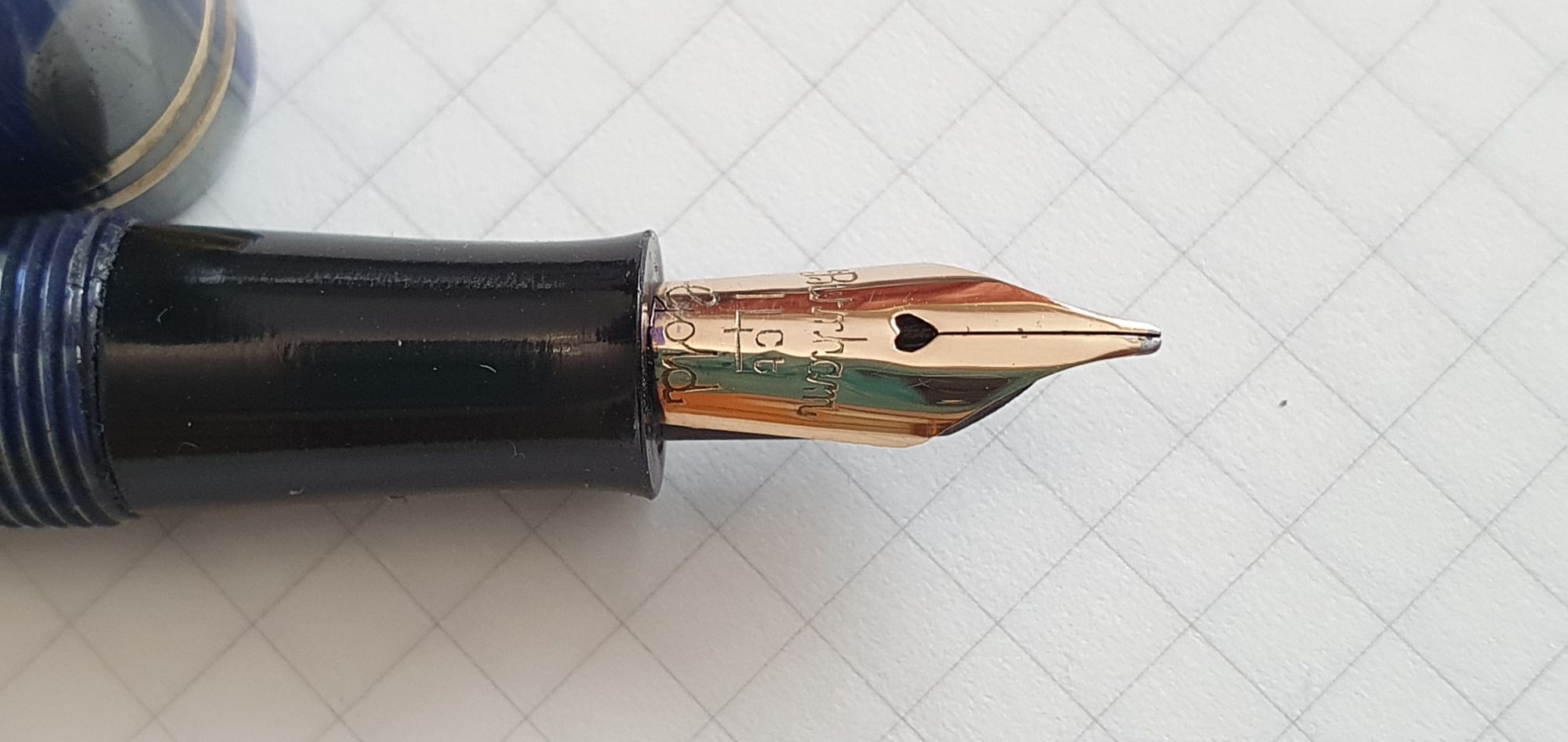
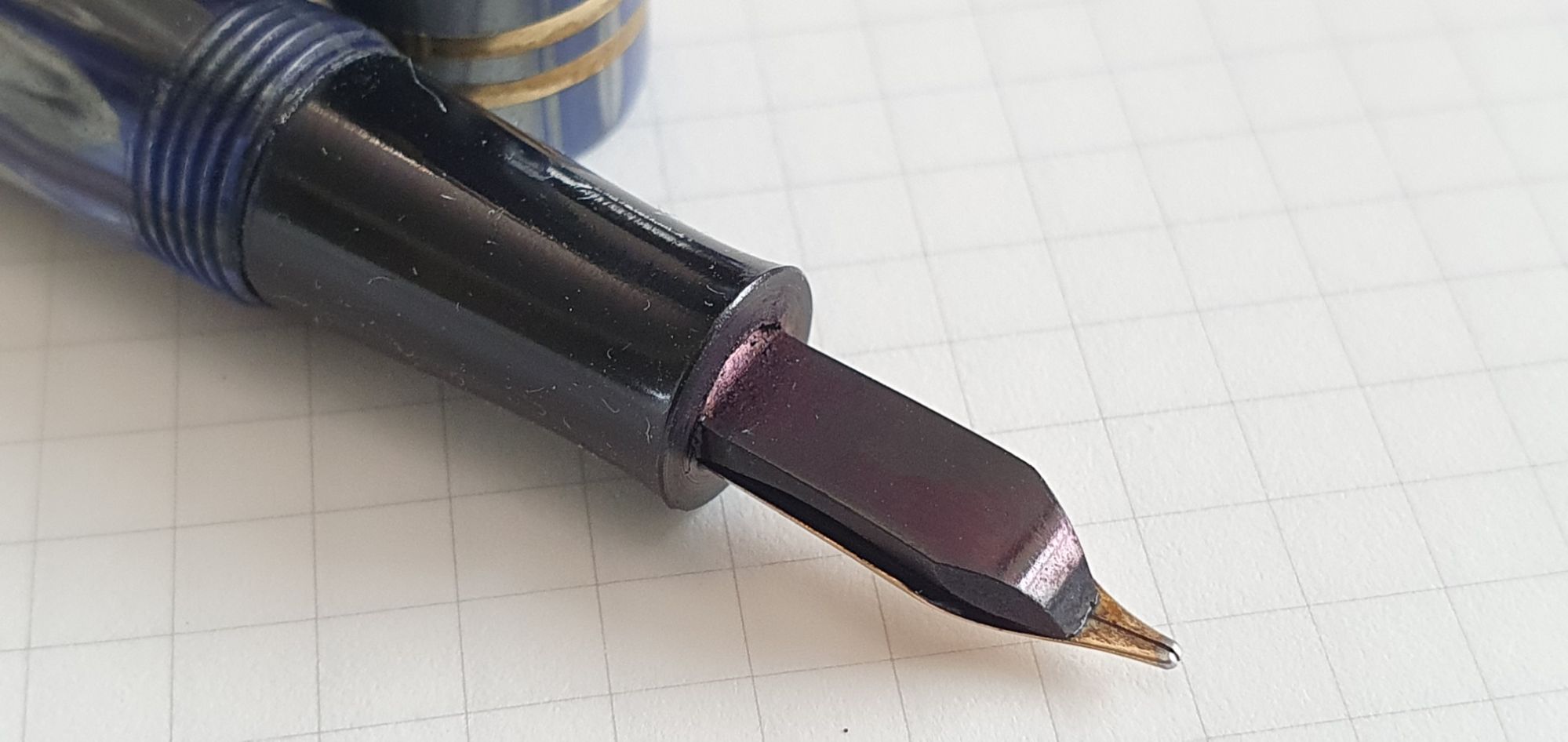
The screw cap comes off in just over two full rotations. The cap threads are multi-start and I found that by inserting the pen (nib up) into the cap, pocket clip up, and turning the pen one click the wrong way before tightening, the lever almost aligns with the clip.
On a recent short break in the beautiful Shropshire countryside, I took the Burnham and used it every day for some holiday journaling in a Leuchtturm A5 notebook. The nicely-tuned vintage nib, with its heart-shaped breather hole, performed as well as any other nib I have ever experienced, at any price. One fill managed more than 12 pages, before it was time to enjoy the lever-filling experience again.
Size and weight:
Capped, the pen measures about 121mm and uncapped, only 109mm. The weight is about 11.5 grams capped, comprised as to 7 grams for the pen and 4.5 grams for the cap. These figures are pretty minimal and might sound off-putting but my experience has been that what the pen lacks in size and weight is more than made up for, by its cuteness and the sensation of writing with the smooth and bouncy nib.
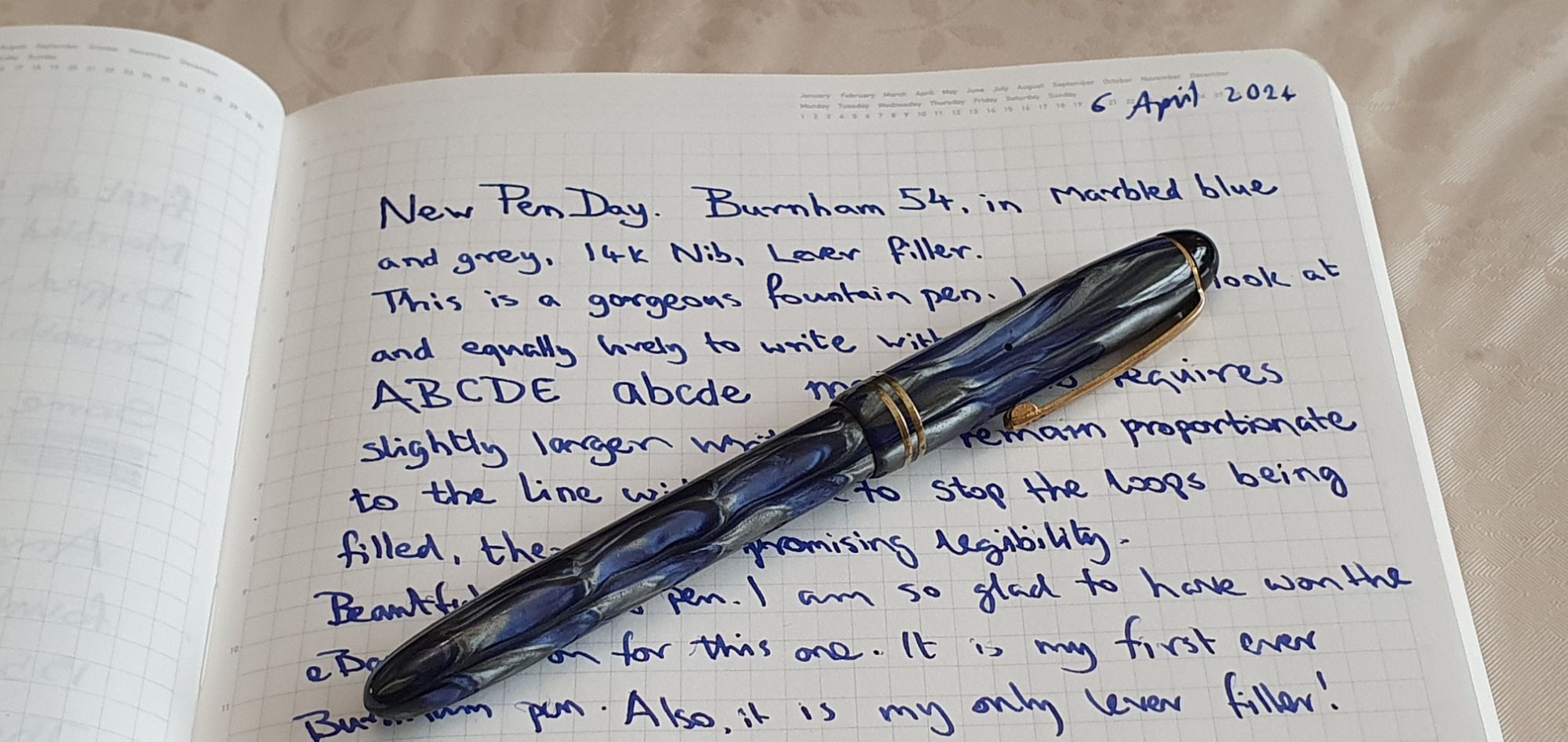
The moral of this tale is that you might surprise yourself, using a pen that goes against your usual criteria. This is good news, unless like me, you are trying (weakly) to resist more pens incoming.
Edit: Here is a photo to show the comparative size of the Burnham 54, against a Parker 51 Demi, a Parker 51 standard and a Parker 45.
